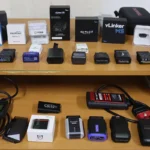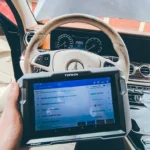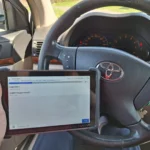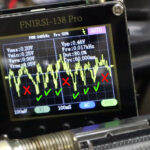The P0442 Evaporative Emission Control System Leak Detected (small leak) points at smaller leak in your gasoline vapor control system usually caused by missing or damaged gas cap which doesn’t seal the system anymore.
P0442 quick overview
| Meaning | Evaporative Emission Control System Leak Detected (small leak) |
| Is it serious? | Generally not severe, but it may lead to increased emissions and, in some cases, affect fuel efficiency. |
| Possible causes | – Loose, damaged, or faulty gas cap. – Cracked or leaking fuel filler neck. – Issues with EVAP system components like the purge solenoid, vent solenoid, or canister. – Fuel tank leaks or pressure sensor problems. |
| How to diagnose | 1. Use a smoke machine to visually identify leaks. Inspect the gas cap for proper sealing and replace if necessary. 2. Check the fuel filler neck and surrounding areas for signs of leakage or damage. 3. Test EVAP system components, such as the purge solenoid and vent solenoid, for proper operation. 4. Monitor the fuel tank pressure sensor and related lines. 5. If smoke testing is not possible, consider replacing potential faulty components preventively. 6. Pressurize the fuel tank with nitrogen or inert gas and check for bubbles using soapy water. 7. Ensure the gas cap is properly tightened and has no visible signs of wear or damage. |
| What is EVAP? | The Evaporative Emission Control System (EVAP) is a crucial part of your car’s emission control, preventing fuel vapors from escaping into the air and contributing to pollution. This system includes key components like: Gas Tank: Stores fuel. Charcoal Canister: Acts as a vapor trap. Valves: Open and close to control vapor flow. Hoses: Connect components for vapor movement. Sensors: Keep track of the system’s status. During operation, stored vapors are sent back to the engine to burn, reducing emissions. If there’s a leak or malfunction, it triggers warning codes like P0455, indicating potential issues with this emission-control setup. |
Free PDF: How to choose OBD2 scanner
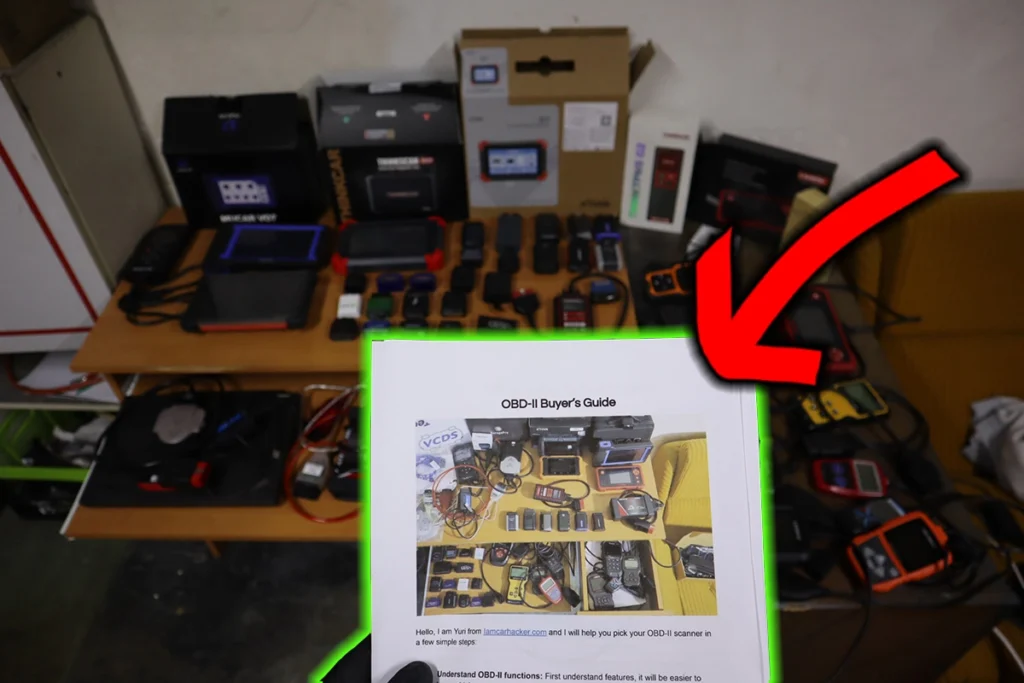
I’ve made you a free PDF to choose the OBD2 scanner in 5 minutes.
✅ Which OBD2 scanner is best?
✅ Which type should you get (DIY, Pro, Hobby)
✅ What is the best scanner for the exact brand/feature (e.g best for BMW)
✅ How to get a Bi-Directional tool for as cheap as $40
✅ Discount coupons for scanners
PDF is 100% free and it is designed to help you pick a scanner in less than a few minutes! Not a boring 50-page guide.
Just tell me where to send it.
How to fix P0442 – learn from mechanics
I looked into P0442 service cases at iatn.com website where in the private forums the mechanics seek advice from other mechanics. I looked up a bunch of cases to help you decide how to fix your issue and see what would a real mechanic do to solve it.
Case #1: Volvo
Vehicle Information:
2001 Volvo V70 2.4T
Engine: 2.4L
Issue + Repair History:
- The Check Engine Light was on, displaying code P0442 (EVAP small leak detected).
- Cross-referenced ECM 430D from Volvo, but the description was unclear.
- Cleared the code, but it returned after 5 weeks.
Suggestions from the Community:
- Suggested that ECM4308 might be the closest match, indicating a leak in the evaporative system.
- Volvo code 430D indicates the EVAP canister shut-off valve is closed, and the CP valve is pulsed. ECM-430D might trigger if the tank pressure falls too quickly.
- Common causes include a leaking tank, filler pipe, gas cap, EVAP canister, EVAP canister shut-off valve, or lines.
- Recommended smoke testing to identify any leaks, especially around the gas tank.
Final Fix:
A leaking gas tank was discovered through smoke testing. This was the third gas tank leak encountered on this vehicle. It was advised to remove the EVAP vent plug after a smoke test to prevent future issues.
Case #2: Jeep
Vehicle Information:
2002 Jeep Liberty Limited
Engine: 3.7L
Issue + Repair History:
- The Check Engine Light was on, displaying code P0442 (EVAP small leak).
- The purge hose had been replaced due to cracks.
- Smoke testing was performed, but no leaks were initially found.
Suggestions from the Community:
- Check the gas cap for rust, discoloration, or other issues.
- Tap the gas cap to identify any rust particles.
- Use a smoke test to detect leaks, especially when the vehicle is cold.
- Conduct an air check for a more accurate test.
- Replace any cracked hoses with OEM parts.
- If possible, force the EVAP test using appropriate diagnostic tools.
- Investigate the canister purge solenoid for internal leaks.
- Ensure that all replaced components are of OEM quality.
Final Fix:
The issue was traced to the gas cap. Replacing the gas cap resolved the problem.
Case #3: Chevrolet
Vehicle Information:
2002 Chevrolet Impala
Engine: 3.8L
Issue + Repair History:
- The MIL Lamp was on, showing code P0442 (Small EVAP leak).
- The gas cap had already been replaced.
Suggestions from the Community:
- Consider updating the fuel pump seal for the tank.
- Access the fuel tank pressure sensor and check voltage readings with the gas cap off.
- Examine the fuel filler neck for cracks or leaks, especially where it joins the fuel tank.
- In the absence of a smoke machine, consider replacing parts like the purge solenoid and vent solenoid as a preventive measure.
- Look for fuel stains around the filler neck, which might indicate leakage.
- Test the vent valve to ensure it holds vacuum when turned on.
- If the gas cap was recently replaced, consider replacing it again and clearing the code before driving.
Final Fix:
Fuel stains were found around the area where the filler neck joins the gas tank. The fuel filler neck and related components were replaced, resolving the issue.
Free PDF: How to choose OBD2 scanner

I’ve made you a free PDF to choose the OBD2 scanner in 5 minutes.
✅ Which OBD2 scanner is best?
✅ Which type should you get (DIY, Pro, Hobby)
✅ What is the best scanner for the exact brand/feature (e.g best for BMW)
✅ How to get a Bi-Directional tool for as cheap as $40
✅ Discount coupons for scanners
PDF is 100% free and it is designed to help you pick a scanner in less than a few minutes! Not a boring 50-page guide.
Just tell me where to send it.



